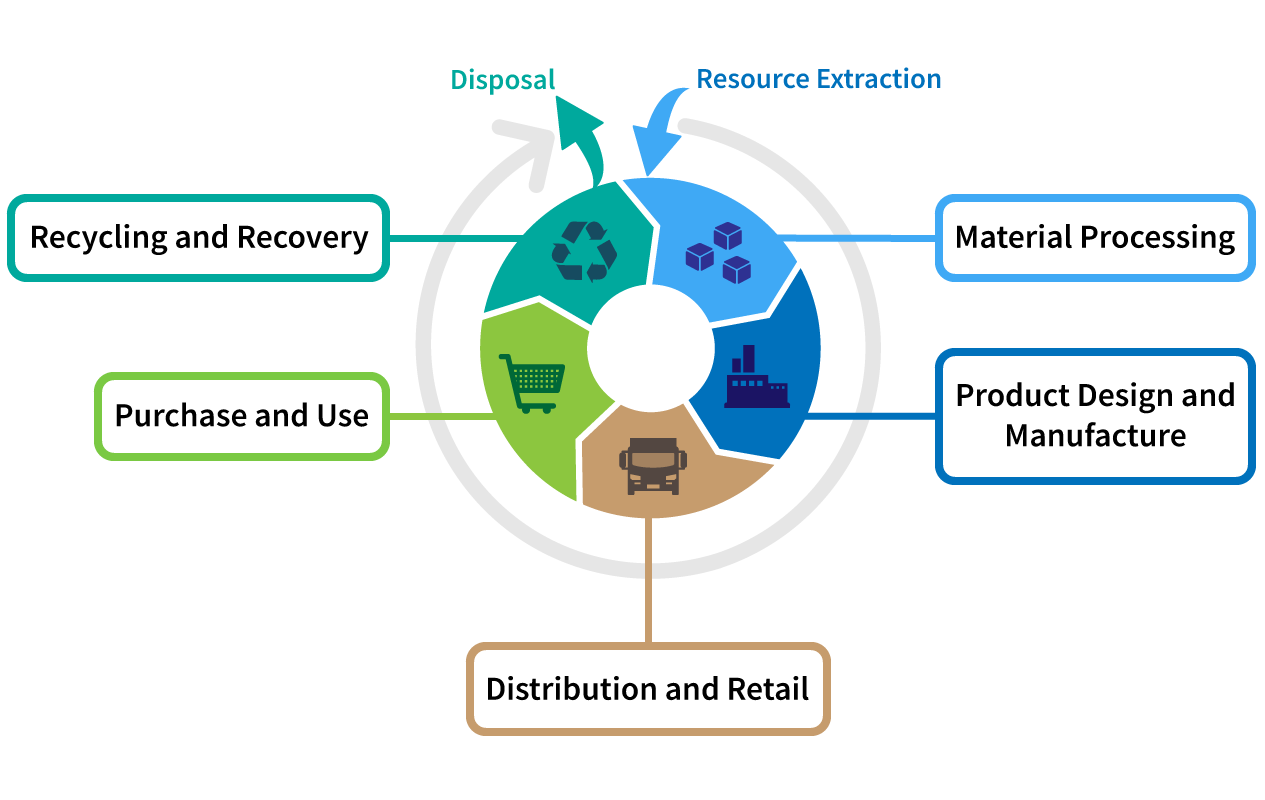Why Materials Matter
Americans use and consume over 10 tons of products and resources ("materials") per person each year [“Sustainable Materials Management: The Road Ahead” (U.S. EPA, June 2009)]. The materials we use flow through the economy from extraction to processing, manufacturing, use, and recovery or disposal. Each stage requires energy and results in greenhouse gas emissions. In fact, more than 40% of U.S. emissions are a result of producing, transporting, and disposing of materials [“Opportunities to Reduce Greenhouse Gas Emissions through Materials and Land Management Practices” (U.S. EPA, September 2009)].
Sustainable Materials Management
Sustainable materials management is an approach to reducing greenhouse gas emissions and environmental impacts throughout every stage of a product’s lifecycle, from manufacture to recycling or disposal. Examples of effective greenhouse gas emissions reduction strategies include:
- reducing the amount of materials used to make products or provide services,
- increasing products durability so they last longer, and
- increasing ease of disassembly, recycling, and transformation of products for further use of their components.

Join the West Coast Climate Forum
The West Coast Climate and Materials Management Forum is a collaboration of state, local, and tribal governments that are developing ways to institutionalize sustainable materials management practices.
Become part of our growing network of governments and you can:
- Participate in Forum Workgroups
- Learn more about sustainable materials management tools and strategies to further your climate change goals.
- Get support planning and prioritizing your materials management efforts.
- Be a peer mentor by sharing your experiences and lessons learned.
- Get recognized for your work through the West Coast Climate Forum’s website.
